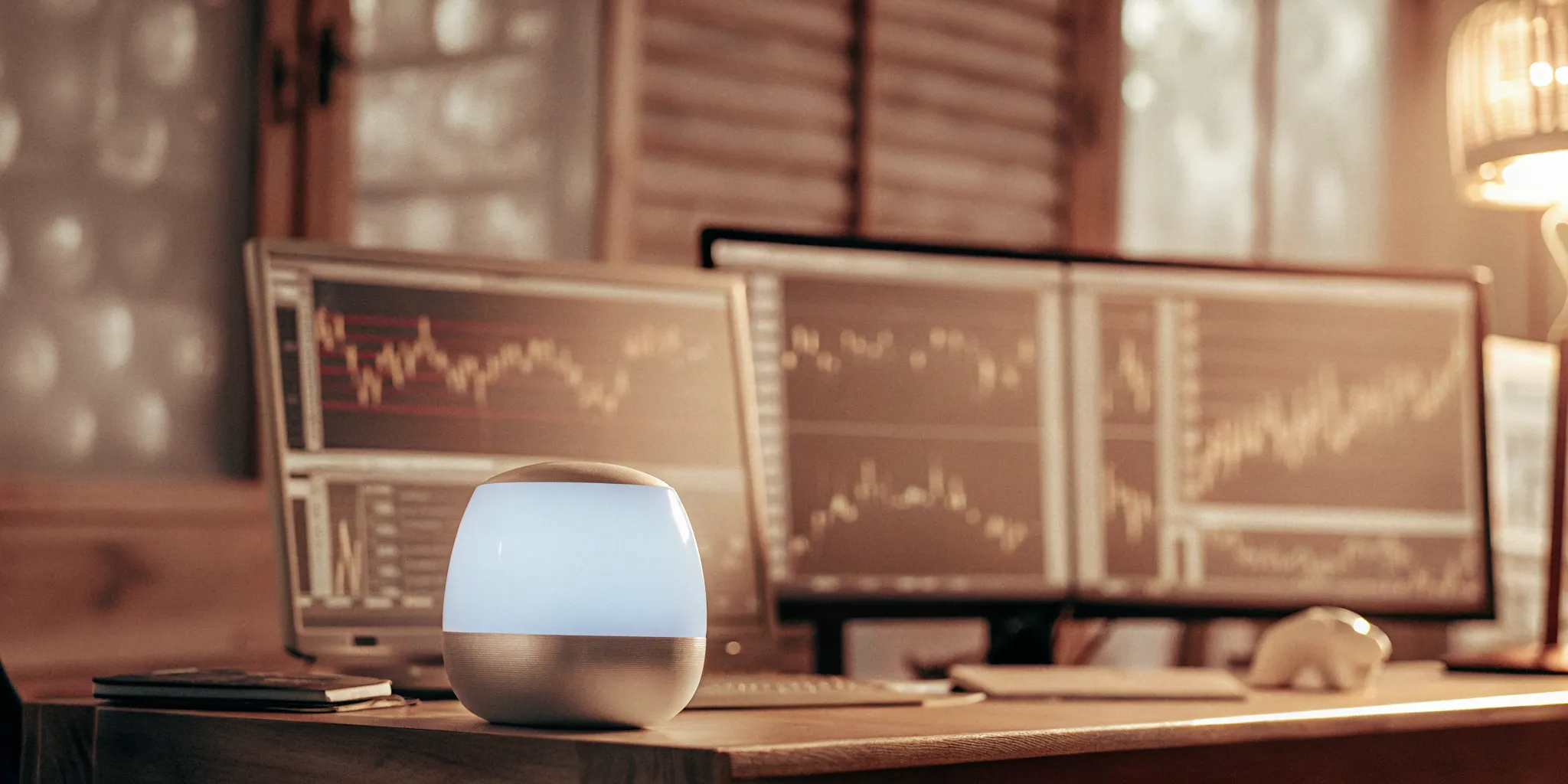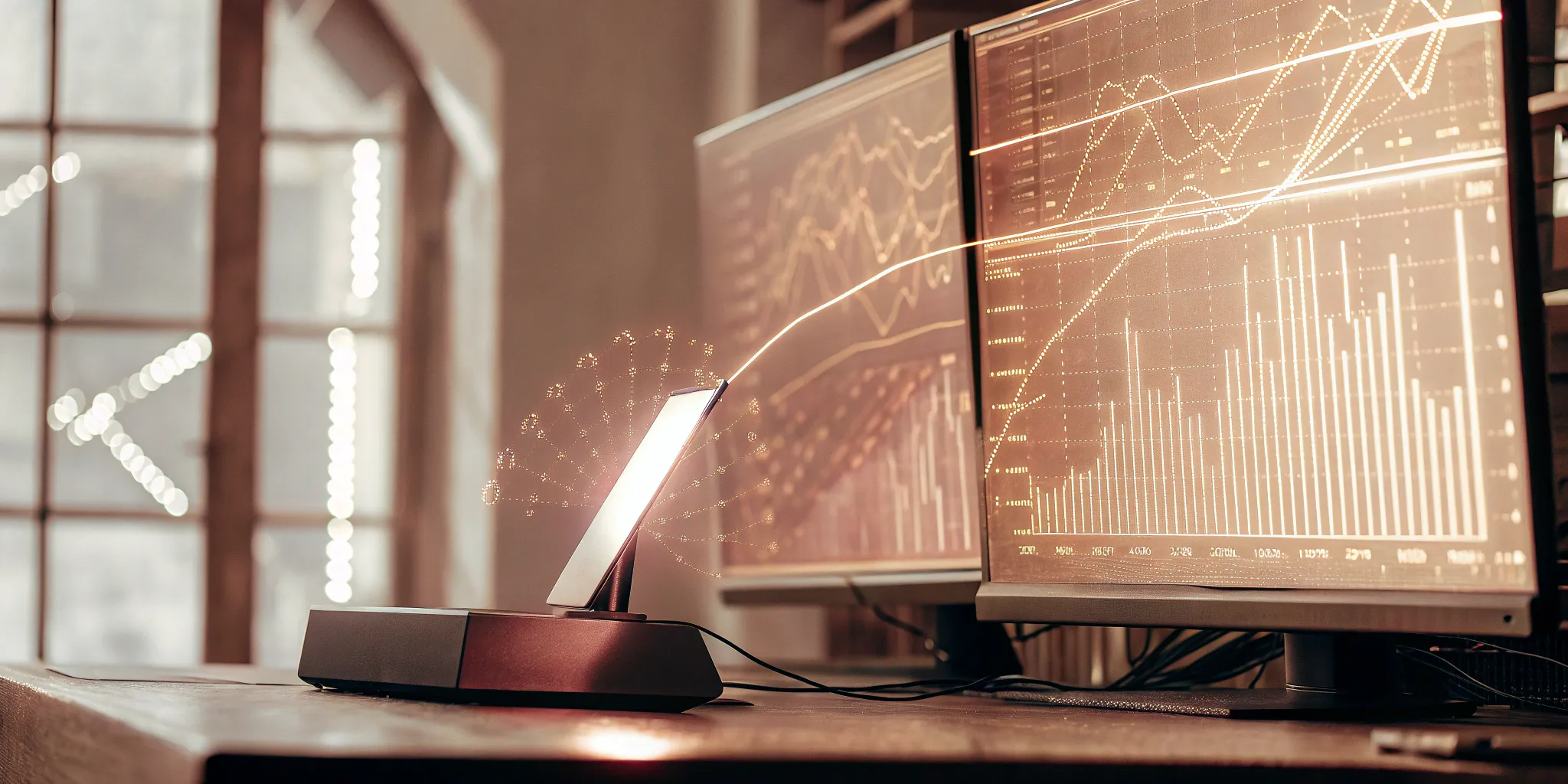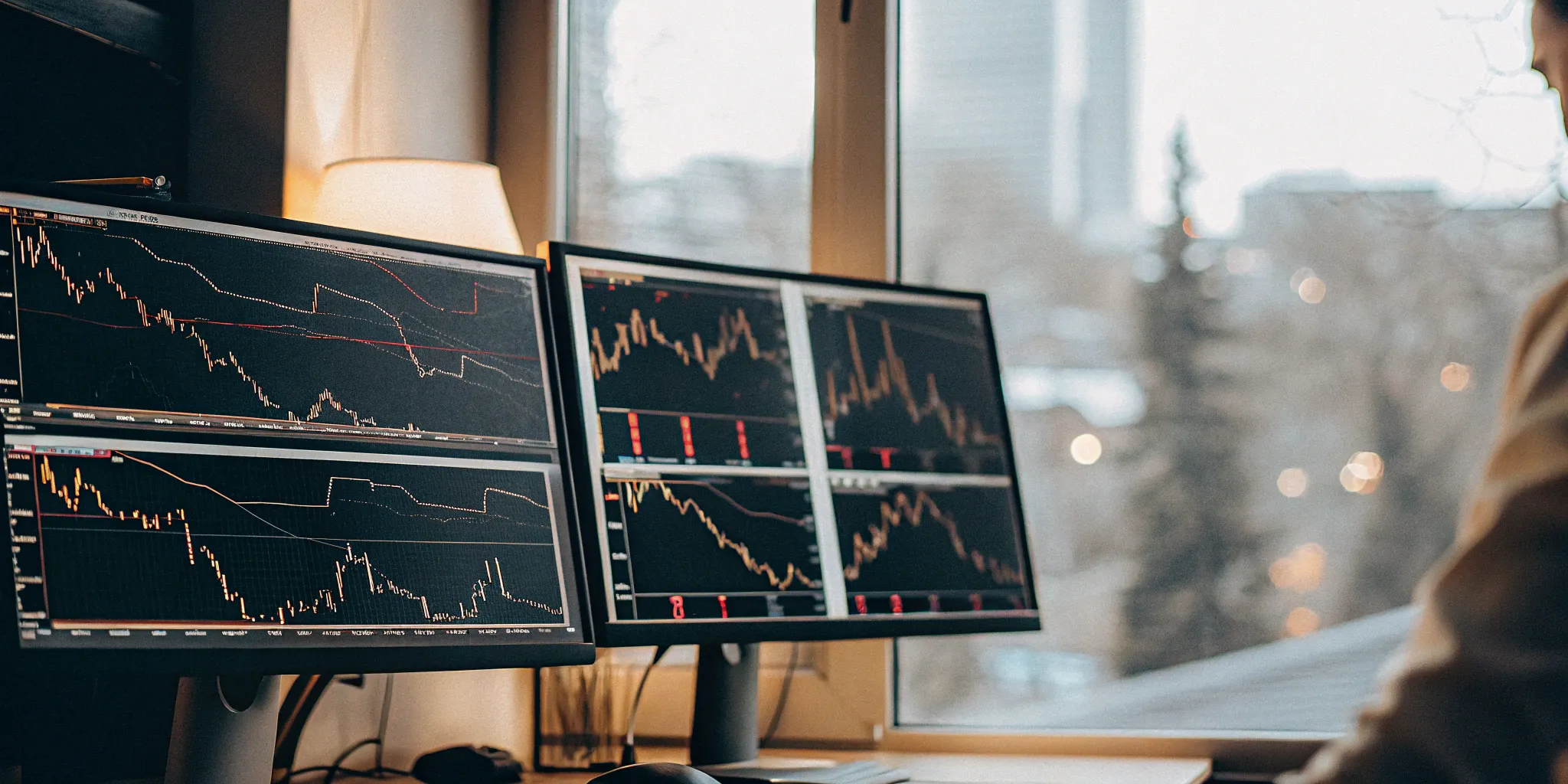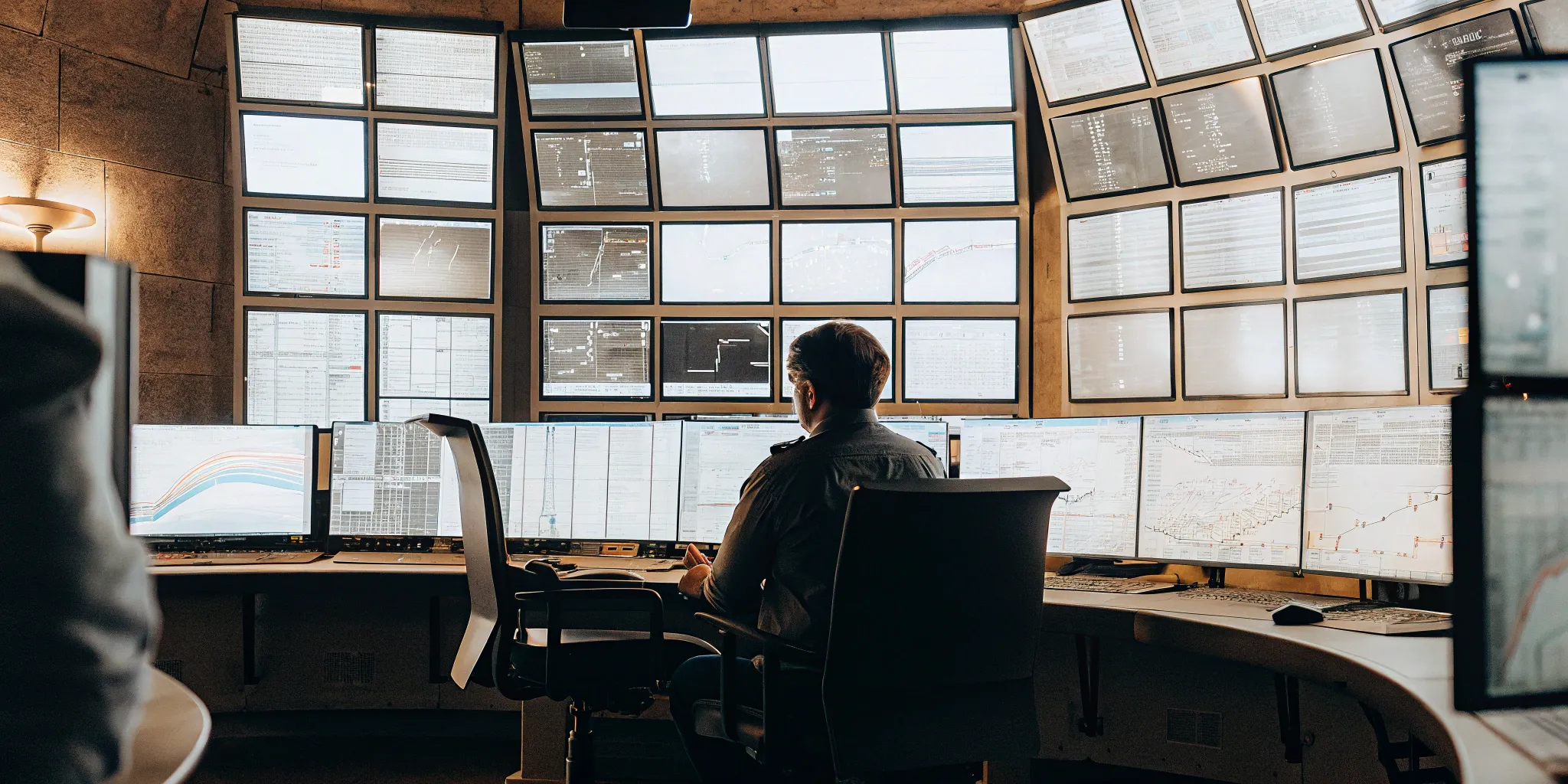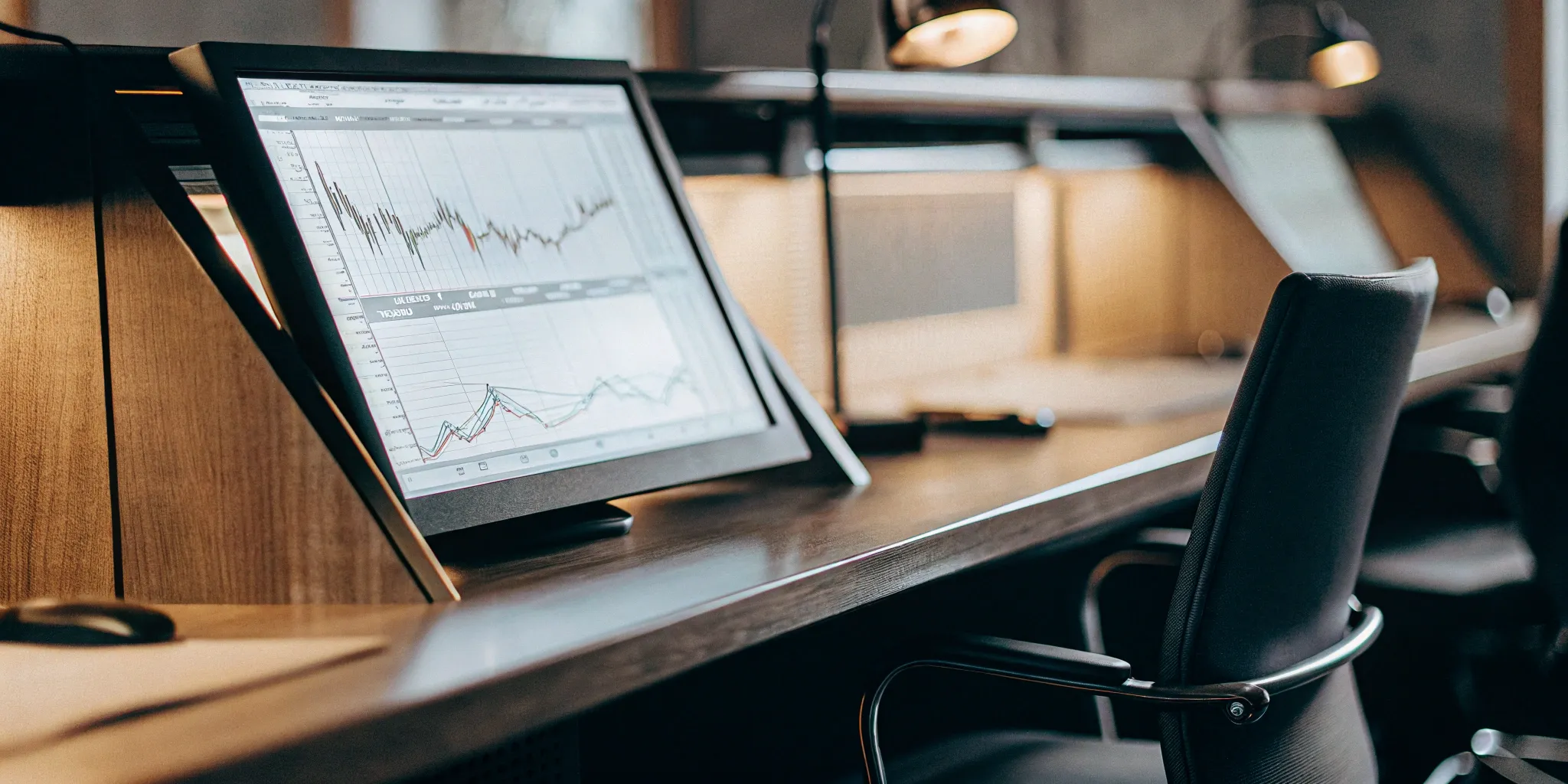The forex market is a whirlwind of data, trends, and split-second decisions. For years, traders have relied on charts, technical analysis, and gut feelings to navigate this complex landscape. But the game is changing. Artificial intelligence forex trading is no longer a futuristic concept—it’s a reality. AI-powered tools are transforming how we analyze data, execute trades, and manage risk in the forex market. Whether you’re a seasoned trader or just starting, understanding how AI can enhance your trading strategy is essential for staying ahead of the curve. This guide will demystify artificial intelligence forex trading, providing actionable insights and practical steps to integrate AI into your trading arsenal.
Key Takeaways
- AI empowers forex traders with advanced tools: From automated trading and enhanced data analysis to sophisticated risk management, AI offers numerous advantages. Remember that human oversight is crucial for interpreting market events and adapting to unforeseen circumstances.
- Integrating AI effectively requires a strategic approach: Carefully select a platform that aligns with your trading style, backtest your strategies rigorously, and continuously monitor performance. Balance the efficiency of automation with your own market knowledge and trading expertise.
- AI in forex is not without its challenges: Algorithmic errors, data quality issues, and the unpredictable nature of the market can impact AI’s effectiveness. A balanced approach, combining AI’s analytical power with human judgment, is essential for navigating these complexities.
What is AI in Forex Trading?
AI in forex trading uses computer programs to automate and enhance currency trading. These programs, powered by sophisticated algorithms, analyze vast amounts of market data, identify patterns, and execute trades at speeds and frequencies far beyond human capability. This data-driven approach aims to improve trading decisions, manage risk, and ultimately increase profitability.
What is AI and its role in forex?
Artificial intelligence (AI) rapidly analyzes massive datasets, including historical price data, economic indicators, and even news sentiment, to identify subtle correlations and patterns that a human trader might miss. AI excels at spotting these trends and can predict potential market movements with increasing accuracy. This analytical power helps traders make more informed decisions about when to buy or sell currencies. As explained by The 5ers, AI “finds patterns and predicts trends better than a person could.” This speed and efficiency are transforming the forex market, automating tasks from market analysis to execution.
Key AI technologies reshaping forex
Several key AI technologies drive this transformation. Automated trading systems, often called expert advisors (EAs) or trading robots, execute trades automatically based on pre-defined rules and real-time market analysis. These systems can monitor the market 24/7 and react instantly to changing conditions, eliminating the emotional element of trading. AI algorithms, trained on vast historical datasets, learn to predict market movements and identify profitable opportunities, including arbitrage. These algorithms constantly adapt to evolving market conditions, refining their strategies over time. As noted by Ion Group, this adaptability is crucial in the dynamic world of forex, where market conditions can shift rapidly. This combination of speed, adaptability, and data-driven analysis makes AI a powerful tool for forex traders.
Benefits of AI-Powered Forex Trading
AI is transforming the forex market, offering traders several key advantages. Let’s explore some of the core benefits of integrating AI into your forex trading strategy.
Enhance data analysis and pattern recognition
The forex market generates massive amounts of data every second. AI excels at analyzing these large datasets to identify trends and patterns that humans might miss. Algorithms can process historical price data, economic indicators, and even news sentiment to uncover hidden correlations and potential trading opportunities. This granular level of market analysis allows for more informed trading strategies and the development of customized client solutions. AI can even analyze news and social media sentiment, providing a comprehensive view of market drivers.
Improve decision-making and manage risk
AI can significantly enhance decision-making in forex trading. By quickly identifying risky market shifts and finding correlations between currencies, AI algorithms can help traders mitigate potential losses. AI can also detect fraudulent activities, further strengthening risk management and potentially boosting profits. Furthermore, AI tools can optimize position sizes and dynamically adjust trading parameters in response to changing market conditions, ensuring that risk is continuously managed.
Trade without emotion and increase market efficiency
One of the biggest challenges in forex trading is managing emotions. Fear and greed can lead to impulsive decisions that negatively impact returns. AI eliminates this emotional element, executing trades based on pre-defined rules and data analysis. This consistent, data-driven approach leads to more disciplined trading and potentially better outcomes. Moreover, AI automates time-consuming tasks, freeing up traders to focus on higher-level strategies. This increased efficiency can lead to significant cost savings and improved overall market performance. AI’s ability to process information and execute trades at high speed also contributes to greater market efficiency.
Challenges and Risks of AI in Forex
While AI offers exciting possibilities for forex trading, it’s essential to understand the potential downsides. Like any tool, AI has limitations, and ignoring these can lead to significant risks. Let’s explore some key challenges:
Algorithmic Errors and Data Quality Issues
AI algorithms, especially in machine learning, depend heavily on the quality of their training data. If the data is flawed, incomplete, or biased, the algorithm’s output can be unreliable, leading to inaccurate predictions and poor trading decisions. Think of it like baking a cake: if your ingredients are off, the cake won’t turn out right. Similarly, bad data leads to algorithmic errors, which can translate to financial losses in forex. Data quality is paramount for successful AI trading.
Even with high-quality data, algorithms can have inherent glitches or bugs. These errors might not surface immediately and can disrupt trading strategies unexpectedly, causing unforeseen losses. Regularly testing and validating your AI trading system are crucial to minimize the impact of such errors.
Adapting to Unexpected Market Events
AI systems excel at recognizing patterns in historical data. However, the forex market is dynamic and influenced by unpredictable factors, including global events, economic news, and even social media sentiment. These events can throw off even the most sophisticated AI, as its predictions are based on past trends. For example, a sudden geopolitical shift can create market volatility that an AI system hasn’t been trained to handle. Therefore, relying solely on AI for trading decisions can be risky. Human oversight remains essential to interpret unexpected market events and adjust trading strategies accordingly.
Over-Reliance and Interpretability Concerns
One of the biggest risks with AI in forex is over-reliance. Traders might be tempted to blindly follow AI-generated signals without understanding the rationale behind them. This can be dangerous, especially when market conditions change rapidly. It’s important to remember that AI is a tool to assist, not replace, human judgment. Traders should maintain control and critically evaluate AI’s suggestions.
Another challenge is the “black box” nature of some AI models. Their complexity can make it difficult to understand how they arrive at their decisions. This lack of interpretability can create trust issues for traders who prefer to understand the logic behind trading signals. Choosing transparent AI systems and developing a deeper understanding of how they work can help mitigate this concern.
AI-Driven Forex Trading Strategies
AI is changing how forex traders approach the market. Instead of relying solely on charts or fundamental analysis, traders now use AI-powered tools to analyze data, identify patterns, and execute trades. Let’s explore some key AI-driven forex trading strategies:
Trend-Following and Mean Reversion Algorithms
AI algorithms excel at identifying trends. Trained on vast historical datasets, these algorithms can spot emerging trends and execute trades accordingly. Trend-following systems aim to profit from sustained price movements in one direction. AI can identify when a currency pair deviates significantly from its historical average, signaling a potential trading opportunity. Conversely, mean reversion strategies rely on the idea that prices tend to revert to an average value over time. AI-powered algorithms constantly adapt to changing market conditions, making them effective for both approaches.
Sentiment Analysis and News-Based Systems
Imagine a tool that could read and interpret thousands of news articles and social media posts in seconds. That’s the power of AI-driven sentiment analysis. These systems process massive amounts of text data to gauge market sentiment towards specific currencies or economic events. By understanding the collective “feeling” of the market, traders can anticipate potential price swings and adjust their strategies. This real-time sentiment analysis, combined with news-based trading signals, provides a significant edge in the fast-paced forex market.
High-Frequency Trading with AI
High-frequency trading (HFT) involves executing many trades at incredibly high speeds. AI is perfectly suited for this type of trading. AI-powered HFT systems can analyze market data, identify fleeting opportunities, and execute trades in milliseconds—far faster than any human. This speed advantage allows AI systems to capitalize on tiny price fluctuations, generating profits through sheer volume. While HFT can be highly profitable, it also requires sophisticated technology and a deep understanding of market mechanics.
Integrate AI Tools into Forex Trading
Successfully integrating AI into your forex trading involves careful planning and execution. It’s more than just picking a new platform; it’s about understanding how AI can complement your existing knowledge and strategy. Here’s a breakdown of key steps to consider:
Select the Right AI Trading Platforms
Choosing the right AI trading platform is the foundation of your AI forex journey. Begin by researching and comparing different platforms, focusing on features that align with your trading style and goals. Look for platforms offering robust AI-driven analytics, customizable parameters, and transparent performance reporting. Expert reviews, like those from FXEmpire, can offer valuable insights and save you time. Consider factors like ease of use, available integrations with other trading tools, and the level of customer support provided.
Backtest and Optimize AI Strategies
After you’ve chosen a platform, backtest and refine your AI-powered strategies. Don’t jump into live trading without thoroughly testing your chosen algorithms using historical data. This process helps you identify potential weaknesses, adjust parameters, and ensure your strategy performs effectively under various market conditions. Backtesting shows you how your AI would have performed in the past, giving you a more realistic picture of its potential. Remember, market conditions constantly change, so regular optimization is key.
Balance Automation with Human Oversight
While AI offers incredible potential for automating trades, risk management, and generating signals, it’s not a “set it and forget it” solution. AI has limitations, and unexpected market events can still occur. The most effective approach combines the power of AI with human oversight. Stay involved in the process, monitor your AI’s performance, and be prepared to intervene when necessary. Think of AI as a powerful tool that enhances your trading capabilities, not replaces them. Balancing automation with your own expertise creates a more robust and adaptable trading strategy.

Machine Learning Applications in Forex
Machine learning is transforming how we analyze data and execute trades in the forex market. From predicting currency fluctuations to automating complex strategies, let’s explore some key applications:
Predictive Analytics and Forecasting
Imagine having a tool that could anticipate market movements. Machine learning algorithms, trained on vast historical datasets, can identify patterns and trends to forecast potential price changes. These predictive models analyze everything from price and volume to economic indicators, giving traders an edge in anticipating market direction and pinpointing profitable opportunities like arbitrage. The beauty of these algorithms is their adaptability—they continuously learn and refine their predictions as market conditions evolve.
Adaptive Trading Systems
One of the most powerful applications of machine learning in forex is the development of adaptive trading systems. These automated systems execute trades based on pre-defined rules and real-time market analysis, eliminating emotional decision-making. They react to market fluctuations with speed and precision, adjusting positions and managing risk more efficiently than any human trader could. This automation frees up traders to focus on higher-level strategy and portfolio management.
Use Natural Language Processing for Market Insights
Beyond crunching numbers, machine learning can also analyze textual data. Natural language processing (NLP) algorithms sift through news articles, social media posts, and economic reports to gauge market sentiment. This sentiment analysis provides valuable context that can inform trading decisions. For example, NLP can detect shifts in public opinion about a particular currency, providing early warning signs of potential market volatility.
Manage AI Risk in Forex
Even with AI’s advanced capabilities, forex trading has inherent risks. However, AI can also be a powerful tool to mitigate those risks. Here’s how to leverage AI for better risk management:
Automate Risk Assessment and Position Sizing
AI excels at evaluating vast datasets to identify potential threats and calculate optimal position sizes for each trade. This automated risk assessment takes the emotion out of trading decisions, helping you avoid overexposure and maintain a disciplined approach. AI can also dynamically adjust trading parameters as market conditions shift, allowing for more agile and effective responses to volatility. This automated adaptability is a significant advantage in the fast-paced forex market.
Set Dynamic Stop-Losses
Stop-loss orders are crucial for protecting your capital. AI can analyze real-time market conditions and adjust stop-loss levels automatically. This dynamic approach ensures your stop-losses remain relevant in fluctuating markets, preventing excessive losses from sudden price swings. Instead of manually monitoring and adjusting stop-losses, AI takes care of it for you, freeing up your time and reducing the risk of human error. For more information on stop-loss orders and how they work, check out this helpful guide.
Diversify Portfolios with AI
AI’s ability to analyze massive datasets allows it to uncover hidden trends and patterns that humans might miss. This leads to more sophisticated trading strategies and the potential for customized client solutions. AI can also enhance portfolio diversification by identifying uncorrelated assets and distributing investments across various currency pairs. This reduces your overall risk exposure and increases the potential for consistent returns.
The Future of AI in Forex Markets
The intersection of artificial intelligence and forex trading is constantly evolving. AI’s role in forex is expanding beyond basic automation to sophisticated analysis and execution. This evolution presents both exciting opportunities and important regulatory considerations.
Emerging AI Technologies and Their Potential Impact
AI is rapidly transforming how we analyze data and execute trades. Algorithms can now process massive datasets, identifying subtle market trends and patterns that humans might miss. This includes high-frequency trading, where AI executes thousands of trades per second. Beyond speed, AI excels at risk management, identifying risky market shifts and correlations between currencies to mitigate potential losses. Some AI systems even incorporate sentiment analysis, interpreting news and social media to gauge market sentiment. This ability to analyze diverse data sources and adapt to changing market conditions positions AI as a powerful tool for predictive analytics and real-time trade optimization.
Regulatory Considerations for AI Trading
As AI becomes more prevalent in forex, regulators are grappling with how to oversee this rapidly changing landscape. Different jurisdictions are adopting varied approaches. The EU, for example, is implementing a risk-based approach to AI regulation, while the UK favors a more flexible framework. Meanwhile, the US is still developing its regulatory framework. One of the key challenges is the speed of AI development. Regulations can struggle to keep pace with the rapid advancements in AI technology. This evolving regulatory landscape requires careful monitoring and adaptation by all participants in the AI-driven forex market.
Start with AI Forex Trading
Getting started with AI forex trading can feel like a big leap, but by breaking it down into smaller steps, you can approach it strategically. Whether you’re a seasoned trader or just beginning, understanding the essential skills, implementation steps, and the importance of continuous learning will set you up for success.
Essential Skills for AI Forex Traders
To use AI tools effectively in forex, you’ll need a blend of technical and market-specific skills. A basic understanding of data science is helpful for collecting, cleaning, and interpreting data. Check out online resources and courses to get started. Familiarity with AI and machine learning concepts will help you evaluate and select appropriate AI models. Some programming skills, particularly in Python, are often necessary for customizing and implementing these models. Many free resources are available online if you want to learn to code. Finally, a solid grasp of forex market fundamentals, including price action, risk management, and market analysis, is crucial for making informed trading decisions.
Steps to Implement AI in Your Trading Strategy
Implementing AI in your forex trading involves a systematic approach. First, define your trading goals. What do you hope to achieve with AI? Are you aiming for higher returns, reduced risk, or increased trading efficiency? Next, choose an AI trading platform that aligns with your goals and technical skills. Some platforms are designed for beginners, while others cater to experienced traders. Before deploying your AI strategy with real capital, backtest it thoroughly using historical market data. This helps you assess its potential performance and identify any weaknesses. Once live, monitor your AI’s performance closely and be prepared to adjust parameters or refine your strategy as market conditions change. Consider using a demo account first to practice implementing your AI strategy.
Continuous Learning and Adaptation in AI Trading
The forex market is dynamic, so continuous learning and adaptation are essential for success with AI trading. Stay updated on the latest advancements in AI and machine learning, exploring new models and techniques that could enhance your trading strategy. Regularly review and analyze your AI’s performance, identifying areas for improvement and adjusting your approach as needed. The ability to adapt to changing market conditions and refine your AI tools is key to long-term success in AI-driven forex trading. AI can help you identify market shifts, uncover correlations, and even detect unusual activities, but your understanding of the broader market context remains invaluable. Keep an eye on market news and analysis to stay informed.
Related Articles
- Forex AI Trading: A Practical Guide – FN Capital
- AI-Powered Trading Solutions: An Investor’s Guide
- Fully Automated AI Trading: Grow Your Wealth with Software – FN Capital – Like a Cash Account, But Smarter
- Futures Trading Algorithms: The Ultimate Guide – FN Capital
Frequently Asked Questions
Is AI trading suitable for beginners? AI trading can be beneficial for traders of all experience levels. While some platforms require coding skills, many user-friendly options cater to beginners. These platforms often automate complex tasks, making it easier for newcomers to get started. However, it’s crucial to understand the basics of forex trading and risk management before using any AI tool. Start with a demo account and gradually transition to live trading as you gain confidence.
How do I choose the right AI forex trading platform? Selecting the right platform depends on your individual needs and goals. Consider factors like your trading style, technical skills, and risk tolerance. Look for platforms with robust backtesting capabilities, clear performance reporting, and customizable parameters. Research different platforms, read reviews, and compare features before making a decision. If you’re a beginner, prioritize user-friendly platforms with educational resources and excellent customer support.
What are the biggest risks of using AI in forex trading? While AI offers many advantages, it’s essential to be aware of the potential risks. Over-reliance on AI without understanding the underlying logic can be dangerous. Algorithmic errors, unexpected market events, and data quality issues can all impact AI’s performance. It’s crucial to maintain human oversight, critically evaluate AI-generated signals, and be prepared to intervene when necessary. Remember, AI is a tool to enhance your trading, not replace your judgment.
How much does it cost to use AI forex trading tools? The cost of AI forex trading tools varies widely. Some platforms offer free basic versions with limited features, while others charge monthly or annual subscription fees. Advanced platforms with sophisticated AI models and customization options typically come at a higher price. Consider your budget and the features you need when selecting a platform. Many providers offer free trials, allowing you to test the platform before committing to a paid subscription.
What is the future of AI in forex trading? AI’s role in forex is constantly evolving. We can expect more sophisticated AI models, increased automation, and greater integration with other financial technologies. Emerging technologies like deep learning and reinforcement learning have the potential to further enhance trading strategies and risk management. However, regulatory oversight will also play a crucial role in shaping the future of AI in forex. Staying informed about these developments is essential for traders who want to leverage the full potential of AI.
